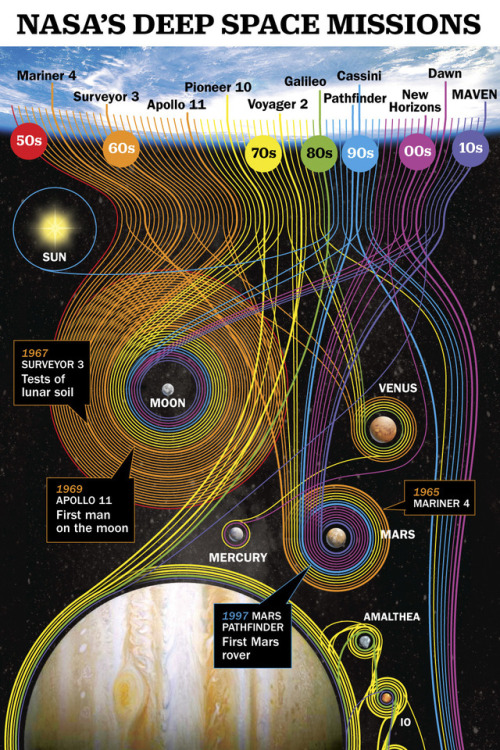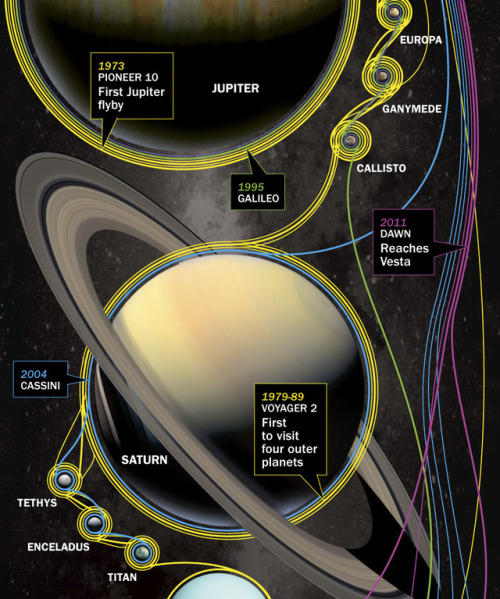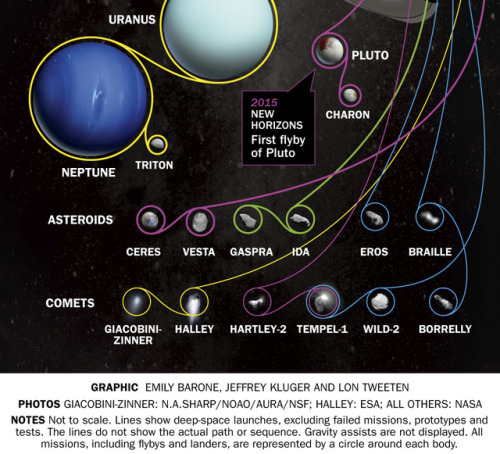What Is Gravitational Lensing?
What is Gravitational Lensing?
A gravitational lens is a distribution of matter (such as a cluster of galaxies) between a distant light source and an observer, that is capable of bending the light from the source as the light travels towards the observer. This effect is known as gravitational lensing, and the amount of bending is one of the predictions of Albert Einstein’s general theory of relativity.

This illustration shows how gravitational lensing works. The gravity of a large galaxy cluster is so strong, it bends, brightens and distorts the light of distant galaxies behind it. The scale has been greatly exaggerated; in reality, the distant galaxy is much further away and much smaller. Credit: NASA, ESA, L. Calcada
There are three classes of gravitational lensing:
1° Strong lensing: where there are easily visible distortions such as the formation of Einstein rings, arcs, and multiple images.

Einstein ring. credit: NASA/ESA&Hubble
2° Weak lensing: where the distortions of background sources are much smaller and can only be detected by analyzing large numbers of sources in a statistical way to find coherent distortions of only a few percent. The lensing shows up statistically as a preferred stretching of the background objects perpendicular to the direction to the centre of the lens. By measuring the shapes and orientations of large numbers of distant galaxies, their orientations can be averaged to measure the shear of the lensing field in any region. This, in turn, can be used to reconstruct the mass distribution in the area: in particular, the background distribution of dark matter can be reconstructed. Since galaxies are intrinsically elliptical and the weak gravitational lensing signal is small, a very large number of galaxies must be used in these surveys.

The effects of foreground galaxy cluster mass on background galaxy shapes. The upper left panel shows (projected onto the plane of the sky) the shapes of cluster members (in yellow) and background galaxies (in white), ignoring the effects of weak lensing. The lower right panel shows this same scenario, but includes the effects of lensing. The middle panel shows a 3-d representation of the positions of cluster and source galaxies, relative to the observer. Note that the background galaxies appear stretched tangentially around the cluster.
3° Microlensing: where no distortion in shape can be seen but the amount of light received from a background object changes in time. The lensing object may be stars in the Milky Way in one typical case, with the background source being stars in a remote galaxy, or, in another case, an even more distant quasar. The effect is small, such that (in the case of strong lensing) even a galaxy with a mass more than 100 billion times that of the Sun will produce multiple images separated by only a few arcseconds. Galaxy clusters can produce separations of several arcminutes. In both cases the galaxies and sources are quite distant, many hundreds of megaparsecs away from our Galaxy.
Gravitational lenses act equally on all kinds of electromagnetic radiation, not just visible light. Weak lensing effects are being studied for the cosmic microwave background as well as galaxy surveys. Strong lenses have been observed in radio and x-ray regimes as well. If a strong lens produces multiple images, there will be a relative time delay between two paths: that is, in one image the lensed object will be observed before the other image.

As an exoplanet passes in front of a more distant star, its gravity causes the trajectory of the starlight to bend, and in some cases results in a brief brightening of the background star as seen by a telescope. The artistic concept illustrates this effect. This phenomenon of gravitational microlensing enables scientists to search for exoplanets that are too distant and dark to detect any other way.Credits: NASA Ames/JPL-Caltech/T. Pyle
Explanation in terms of space–time curvature

Simulated gravitational lensing by black hole by: Earther
In general relativity, light follows the curvature of spacetime, hence when light passes around a massive object, it is bent. This means that the light from an object on the other side will be bent towards an observer’s eye, just like an ordinary lens. In General Relativity the speed of light depends on the gravitational potential (aka the metric) and this bending can be viewed as a consequence of the light traveling along a gradient in light speed. Light rays are the boundary between the future, the spacelike, and the past regions. The gravitational attraction can be viewed as the motion of undisturbed objects in a background curved geometry or alternatively as the response of objects to a force in a flat geometry.

A galaxy perfectly aligned with a supernova (supernova PS1-10afx) acts as a cosmic magnifying glass, making it appear 100 billion times more dazzling than our Sun. Image credit: Anupreeta More/Kavli IPMU.
To learn more, click here.
More Posts from Ocrim1967 and Others

Using All of Our Senses in Space
Today, we and the National Science Foundation (NSF) announced the detection of light and a high-energy cosmic particle that both came from near a black hole billions of trillions of miles from Earth. This discovery is a big step forward in the field of multimessenger astronomy.
But wait — what is multimessenger astronomy? And why is it a big deal?
People learn about different objects through their senses: sight, touch, taste, hearing and smell. Similarly, multimessenger astronomy allows us to study the same astronomical object or event through a variety of “messengers,” which include light of all wavelengths, cosmic ray particles, gravitational waves, and neutrinos — speedy tiny particles that weigh almost nothing and rarely interact with anything. By receiving and combining different pieces of information from these different messengers, we can learn much more about these objects and events than we would from just one.

Lights, Detector, Action!
Much of what we know about the universe comes just from different wavelengths of light. We study the rotations of galaxies through radio waves and visible light, investigate the eating habits of black holes through X-rays and gamma rays, and peer into dusty star-forming regions through infrared light.

The Fermi Gamma-ray Space Telescope, which recently turned 10, studies the universe by detecting gamma rays — the highest-energy form of light. This allows us to investigate some of the most extreme objects in the universe.

Last fall, Fermi was involved in another multimessenger finding — the very first detection of light and gravitational waves from the same source, two merging neutron stars. In that instance, light and gravitational waves were the messengers that gave us a better understanding of the neutron stars and their explosive merger into a black hole.

Fermi has also advanced our understanding of blazars, which are galaxies with supermassive black holes at their centers. Black holes are famous for drawing material into them. But with blazars, some material near the black hole shoots outward in a pair of fast-moving jets. With blazars, one of those jets points directly at us!
Multimessenger Astronomy is Cool

Today’s announcement combines another pair of messengers. The IceCube Neutrino Observatory lies a mile under the ice in Antarctica and uses the ice itself to detect neutrinos. When IceCube caught a super-high-energy neutrino and traced its origin to a specific area of the sky, they alerted the astronomical community.
Fermi completes a scan of the entire sky about every three hours, monitoring thousands of blazars among all the bright gamma-ray sources it sees. For months it had observed a blazar producing more gamma rays than usual. Flaring is a common characteristic in blazars, so this did not attract special attention. But when the alert from IceCube came through about a neutrino coming from that same patch of sky, and the Fermi data were analyzed, this flare became a big deal!

IceCube, Fermi, and followup observations all link this neutrino to a blazar called TXS 0506+056. This event connects a neutrino to a supermassive black hole for the very first time.

Why is this such a big deal? And why haven’t we done it before? Detecting a neutrino is hard since it doesn’t interact easily with matter and can travel unaffected great distances through the universe. Neutrinos are passing through you right now and you can’t even feel a thing!
The neat thing about this discovery — and multimessenger astronomy in general — is how much more we can learn by combining observations. This blazar/neutrino connection, for example, tells us that it was protons being accelerated by the blazar’s jet. Our study of blazars, neutrinos, and other objects and events in the universe will continue with many more exciting multimessenger discoveries to come in the future.
Want to know more? Read the story HERE.
Make sure to follow us on Tumblr for your regular dose of space: http://nasa.tumblr.com












Mother Teresa’s Humility List
1. Speak as little as possible about yourself.
2. Keep busy with your own affairs and not those of others.
3. Avoid curiosity.
4. Do not interfere in the affairs of others.
5. Accept small irritations with good humor.
6. Do not dwell on the faults of others.
7. Accept censures even if unmerited.
8. Give in to the will of others.
9. Accept insults and injuries.
10. Accept contempt, being forgotten and disregarded.
11. Be courteous and delicate even when provoked by someone.










(Source)



Deep Space Missions




Couple goals
The Kepler space telescope has shown us our galaxy is teeming with planets — and other surprises

The Kepler space telescope has taught us there are so many planets out there, they outnumber even the stars. Here is a sample of these wondrous, weird and unexpected worlds (and other spectacular objects in space) that Kepler has spotted with its “eye” opened to the heavens.
Kepler has found that double sunsets really do exist.

Yes, Star Wars fans, the double sunset on Tatooine could really exist. Kepler discovered the first known planet around a double-star system, though Kepler-16b is probably a gas giant without a solid surface.
Kepler has gotten us closer to finding planets like Earth.

Nope. Kepler hasn’t found Earth 2.0, and that wasn’t the job it set out to do. But in its survey of hundreds of thousands of stars, Kepler found planets near in size to Earth orbiting at a distance where liquid water could pool on the surface. One of them, Kepler-62f, is about 40 percent bigger than Earth and is likely rocky. Is there life on any of them? We still have a lot more to learn.
This sizzling world is so hot iron would melt!

One of Kepler’s early discoveries was the small, scorched world of Kepler-10b. With a year that lasts less than an Earth day and density high enough to imply it’s probably made of iron and rock, this “lava world” gave us the first solid evidence of a rocky planet outside our solar system.
If it’s not an alien megastructure, what is this oddly fluctuating star?

When Kepler detected the oddly fluctuating light from “Tabby’s Star,” the internet lit up with speculation of an alien megastructure. Astronomers have concluded it’s probably an orbiting dust cloud.
Kepler caught this dead star cannibalizing its planet.

What happens when a solar system dies? Kepler discovered a white dwarf, the compact corpse of a star in the process of vaporizing a planet.
These Kepler planets are more than twice the age of our Sun!

The five small planets in Kepler-444 were born 11 billion years ago when our galaxy was in its youth. Imagine what these ancient planets look like after all that time?
Kepler found a supernova exploding at breakneck speed.

This premier planet hunter has also been watching stars explode. Kepler recorded a sped-up version of a supernova called a “fast-evolving luminescent transit” that reached its peak brightness at breakneck speed. It was caused by a star spewing out a dense shell of gas that lit up when hit with the shockwave from the blast.
* All images are artist illustrations.
Make sure to follow us on Tumblr for your regular dose of space: http://nasa.tumblr.com
Your Gut in Space
Finding the Right Balance for the Microbiota
Trillions of microorganisms live on and in the human body, many of them essential to its function and health. These organisms, collectively known as the microbiota, outnumber cells in the body by at least five times.

Microorganisms in the intestinal tract, the gut microbiota, play an especially important role in human health. An investigation on the International Space Station, Rodent Research-7 (RR-7), studies how the gut microbiota changes in response to spaceflight, and how that change in turn affects the immune system, metabolic system, and circadian or daily rhythms.

Research shows that the microbiota in the mammalian digestive tract has a major impact on an individual’s physiology and behavior. In humans, disruption of microbial communities has been linked to multiple health problems affecting intestinal, immune, mental and metabolic systems.

The investigation compares two different genetic strains of mice and two different durations of spaceflight. Twenty mice, ten of each strain, launch to the space station, and another 20 remain on the ground in identical conditions (except, of course, for the absence of gravity). Mice are a model organism that often serves as a scientific stand-in for other mammals and humans.

Fecal material collected from the mice every two weeks will be examined for changes in the gut microbiota. Researchers plan to analyze fecal and tissue samples after 30 and 90 days of flight to compare the effects of different durations of time in space.

With a better understanding of relationships between changes such as disruption in sleep and an imbalance of microbial populations, researchers can identify specific factors that contribute to changes in the microbiota. Further studies then can determine proactive measures and countermeasures to protect astronaut health during long-term missions.

Make sure to follow us on Tumblr for your regular dose of space: http://nasa.tumblr.com.
-
 thisworldisntrealhoney liked this · 1 year ago
thisworldisntrealhoney liked this · 1 year ago -
 lovepalecollectorpeachme liked this · 1 year ago
lovepalecollectorpeachme liked this · 1 year ago -
 sleepy-soft-boi reblogged this · 2 years ago
sleepy-soft-boi reblogged this · 2 years ago -
 happilykrispygalaxypensieri liked this · 2 years ago
happilykrispygalaxypensieri liked this · 2 years ago -
 starfaringships reblogged this · 2 years ago
starfaringships reblogged this · 2 years ago -
 spockvarietyhour liked this · 2 years ago
spockvarietyhour liked this · 2 years ago -
 darkcomicsbookslibrariesthing liked this · 2 years ago
darkcomicsbookslibrariesthing liked this · 2 years ago -
 polenasty liked this · 2 years ago
polenasty liked this · 2 years ago -
 alxsparks liked this · 2 years ago
alxsparks liked this · 2 years ago -
 werewolfin liked this · 2 years ago
werewolfin liked this · 2 years ago -
 utsuro-bune-0 reblogged this · 2 years ago
utsuro-bune-0 reblogged this · 2 years ago -
 utsuro-bune-0 liked this · 2 years ago
utsuro-bune-0 liked this · 2 years ago -
 playwith reblogged this · 2 years ago
playwith reblogged this · 2 years ago -
 nosemeocurreunnombrexd2570534vc liked this · 2 years ago
nosemeocurreunnombrexd2570534vc liked this · 2 years ago -
 colordesigns reblogged this · 2 years ago
colordesigns reblogged this · 2 years ago -
 stretch-en-wallz liked this · 2 years ago
stretch-en-wallz liked this · 2 years ago -
 stefanopreto reblogged this · 2 years ago
stefanopreto reblogged this · 2 years ago -
 stefanopreto liked this · 2 years ago
stefanopreto liked this · 2 years ago -
 cronostitan liked this · 2 years ago
cronostitan liked this · 2 years ago -
 chiprupt liked this · 2 years ago
chiprupt liked this · 2 years ago -
 flowersandspacestuff liked this · 2 years ago
flowersandspacestuff liked this · 2 years ago -
 ilokilok liked this · 2 years ago
ilokilok liked this · 2 years ago -
 stevenmiami liked this · 2 years ago
stevenmiami liked this · 2 years ago -
 stoicdaddypants reblogged this · 2 years ago
stoicdaddypants reblogged this · 2 years ago -
 autumnemrys reblogged this · 2 years ago
autumnemrys reblogged this · 2 years ago -
 autumnemrys liked this · 2 years ago
autumnemrys liked this · 2 years ago -
 kaze-no-tsubasa reblogged this · 2 years ago
kaze-no-tsubasa reblogged this · 2 years ago -
 lenbryant reblogged this · 2 years ago
lenbryant reblogged this · 2 years ago -
 thisperspective reblogged this · 2 years ago
thisperspective reblogged this · 2 years ago -
 lenbryant liked this · 2 years ago
lenbryant liked this · 2 years ago -
 readwing liked this · 2 years ago
readwing liked this · 2 years ago -
 silentexplorer liked this · 2 years ago
silentexplorer liked this · 2 years ago -
 tachvintlogic reblogged this · 2 years ago
tachvintlogic reblogged this · 2 years ago -
 kaiannanthi reblogged this · 2 years ago
kaiannanthi reblogged this · 2 years ago -
 kaiannanthi liked this · 2 years ago
kaiannanthi liked this · 2 years ago -
 carloshgc-char reblogged this · 2 years ago
carloshgc-char reblogged this · 2 years ago -
 sixtydaychips liked this · 2 years ago
sixtydaychips liked this · 2 years ago